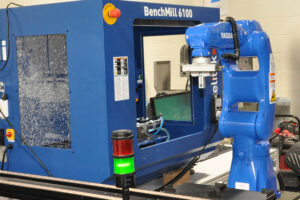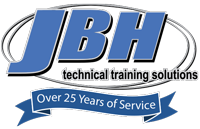Here’s the pathway that all schools can follow when establishing hands-on learning in engineering, manufacturing, and other STEM-related programs.
Before Palo Verde High School in Las Vegas built its manufacturing lab, their students had no idea how things were made. They also didn’t realize the available job opportunities in engineering or manufacturing, nor were they overly interested in learning more about this career pathway.
The school addressed all of these issues (and more) by adding a lab where students can get hands-on with both engineering and manufacturing. Using curriculum from Project Lead the Way (PLTW) and equipment from Intelitek, they began teaching a 4-year-program that includes 3D modeling (introduction to engineering design); applied physics (principles of engineering); computer-integrated manufacturing (CIM); and engineering design.
Palo Verde use CNCMotion software from Intelitek, a program that can simulate the entire machining process in real-time. The software accurately reflects the movement of machine components and tools, and takes raw materials and changes them into finished parts. On the hardware side, they’re using a real Intelitek mill and robotic arm that are set up so that the latter feeds the former.
5 Success Tips
When the school’s CTE department got a grant to create a full manufacturing training program, they were able to add a conveyor system, CNC lathes, four robotic arms, and an automatic storage and retrieval system (ASRS). (See the equipment in action here.)
To ensure the best experience for their students, they used these five key strategies:
- Test your students’ success limits. The program usually has 40 students in an introductory class, where they’ve learned that if you put high expectations on them, those kids will usually meet (or even exceed) them. That’s because students don’t know their own capabilities. Some get so enamored with the manufacturing aspect that they push themselves to understand. They will succeed in ways they’ve never succeeded before.
- Take it from theory to practice. Watching students push themselves because of their interest in learning something is very gratifying to watch. It’s all about theory-to-practice; by the fourth year you can just say, “Go over to that laser and cut that out” and they’ll do it.
- Put the right instructor in charge. It’s important to have a teacher who has lab experience and who is trained on how to instruct in a lab. Ideally, you want someone who has been putting things together for his or her entire life, and who has been working on machines, cars, or jets.
- Emphasize the need for further education: Although students can get a job right out of this program, they will need additional training to build long-term careers and progress in their company. If you have the skills right out of high school and find work with a good company, the company will send you for additional training and maybe even back to school so you can grow vertically in the company. They will pay for that. Business owners have told us, “we’ll pay for their education, just find us the students.”
- Highlight the career opportunities. Right now, there are more available jobs than there are qualified people to fill them. There are huge labor gaps in this country. By creating a manufacturing program that provides students with essential technical skills to begin a career, schools can help students get into mid-level jobs in industry that pay well, and ae long term jobs, and help fill some of those labor gaps.
For the best program success, schools should also showcase the opportunities for students. If they can see how applying math and science works in “real life,” they’ll get interested in it. These engineering skills are useful in other careers besides manufacturing. Automation is an essential part of any manufacturing business, for example, and is becoming an even bigger part of these operations every day. Learning about automation and manufacturing is a great foundation for many current and future technical careers.
























